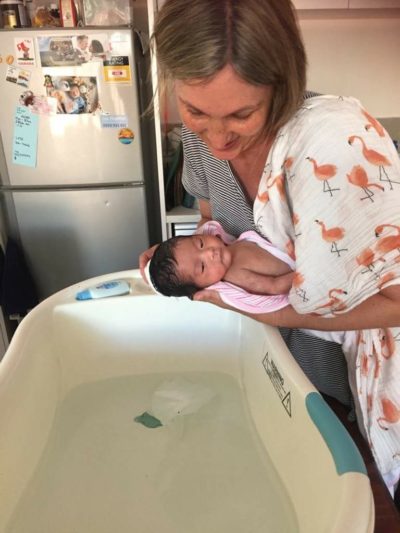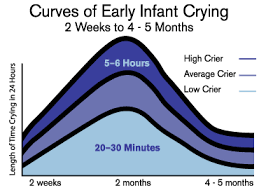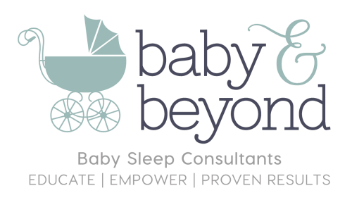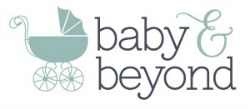Premature Twins
Article by Janferie, Baby and Beyond Sleep Consultant

Managing Reflux and Crying, Sleep and Settling Tips
As a Baby and Beyond Consultant in the Waikato, I have been privileged to support a family on their parenting journey with identical premature twin girls. These babies arrived at 35 weeks weighing around the 2kg mark, spending 5 weeks in a Neo natal Intensive Care Unit for monitoring of their development, feeding and weight gain.
Over the last 3 months I have had hours of one on one , or is that one on two time with these princesses and am now being rewarded with beautiful smiles, cooing and their focused attention.
In his books, Dr Karp a Paediatrician and international author describes how new-borns benefit from a ‘fourth trimester’ where they are supported and nurtured by parents to transition to the new environment of the outside world. How much more so for premature infants. In this reflective article I will review the twins journey through this fourth trimester, specifically around feeding, crying, sleeping and helpful tips and products.
Feeding
- Once home, to support their growth the twins had a combination of feeding at the breast, EBM (expressed breast milk in a bottle) and formula, this allowed other family members to take a twin each to feed when needed. While it is recommended that new born awake times are around 40 -60 minutes, this wasn’t always possible with the twins, who due to prematurity took longer to feed, wind and settle to sleep. We found it worked well to space the feed i.e. by breast or bottle with plenty of pauses for winding and to allow their tummy to settle, if things got rushed or they gulped too much, too fast it led to spilling and vomiting up milk. It was a juggling act to get the needed volume of milk in at 3-4 hourly intervals without them getting too overtired by the process, which would lead to fussing and crying. Did you know that at birth a new-borns stomach is only the size of a marble, and by the end of their first week it has stretched and developed to the size of a golf ball, and it continues adapt to manage increasing milk volumes over the coming weeks and months?
- Both twins experienced reflux (GERD) common in premature infants, this is due to the under development of the valve at the top of the stomach that may not be closing and keeping food down in the stomach as it is designed to do. While most babies outgrow their spitting up and are ‘happy chuckers’, some are affected by the acid regurgitation and this can impact their feeding and sleeping. Reflux was diagnosed by the twins Paediatrician and required medication to treat, which the girls are responding well to. For many years as a Registered Nurse, and in partnership with GP’s and Paediatricians I have supported families navigating the challenges of managing their baby’s reflux.
It is wonderful to see how the twins have grown out of 00000 baby clothes and that they have now doubled their birthweight.
Crying
Did you know that crying peaks around 6 -8 weeks, the same time as many babies begin to give real smiles (or social smiles) We found the twins could be difficult to settle after wake and feed times, and easily over stimulated led to crying and overtiredness. What worked was lots of cuddles snuggled tummy to our chest, being rocked in our arms, offering the breast or dummy to soothe, and using a swaddle. Taking them into the bedroom to settle was effective as it was quieter, darker and less stimulating than the lounge – especially if the older sibling was awake.
A very helpful resource about newborn crying has been developed by –
“ Dr. Ronald Barr, a developmental Paediatrician who has likely done more studies on infant crying than anyone in the world, came up with the phrase the Period of PURPLE Crying. His idea was to explain this phase to parents of new babies so they would know it was normal and they would be encouraged that it would come to an end.
The acronym PURPLE is used to describe specific characteristics of an infant’s crying during this phase and let parents and caregivers know that what they are experiencing is indeed normal and, although frustrating, is simply a phase in their child’s development that will pass.” http://purplecrying.info/crying.php
With my training and experience with crying and common patterns, I was able to provide reassurance that the twins didn’t have ‘colic’ and were within an expected range of crying and fussing for their age and development. All babies in this age group experience some fussing and crying, with around 20 % of otherwise healthy babies having more extreme fussiness and crying. Understanding this helps a parent feel more relaxed about periods of crying, and to focus on effective ways to manage and soothe the baby through this phase.


Sleep
A baby’s neurological development and sleep is linked and new-borns typically spend about 16 hours or more asleep. (Not sure if the twins got that memo though!) However, their sleep is made up of frequent wake ups, and is not organised into any pattern as their brain is developing. Studies also show that identical twins have very similar sleeping patterns, but non-identical (fraternal) twins are less similar.
Did you know your baby had active REM sleep while in your womb from when you were about 6-7 months pregnant. During REM sleep your baby’s eyes dart back and forth under her eyelids, while the rest of her body is very still. She will have the occasional twitch, and her breathing will be irregular.
In quiet sleep, non -REM sleep, your baby will breathe deeply and regularly, sometimes with a big sigh. She will lie still but may move her arms or legs and make little sucking movements with her mouth, or suddenly give a start. After the first few months quiet sleep will gradually become more continuous and the startles will disappear.
When new-borns are asleep 50% of this time is spent in an active phase or REM sleep, however it is thought that premature babies spend about 80 per cent of their sleep in REM sleep. We definitely found these two girls to be very active during sleep for the first months.
TOP TIPS AND PRODUCTS FOR PREMS AND NEW BORNS
Favourite product – Baby Shusher- we used this ‘white noise’ just about every nap or if the twins were overtired and crying, it was so effective. We held the Shusher either in our arms while we rocked a twin until almost asleep, then popped them down into the cot with the Shusher and continue patting until relaxed and sleepy again.
Swaddling – try a large wrap that has lots of stretch in the fabric, or the miracle swaddle – which has little flaps to tuck arms down. Being swaddled is very soothing for new-borns up until around 4-5 months when they should be unswaddled if they can roll over in the cot onto their tummies.
The reason swaddling is so helpful is that new-borns up until 3-4 months have a startle or Moro reflex, and we found one twin in particular would really startle herself and cry easily.
So what does this startle reflex look like?
1 – The baby will experience a sensation of free-falling, where the baby reacts by lifting and stretching their arms. She may even let out a sharp gasp, or cry
2 – The baby will curl the arms and legs closer to their body into a slight fetal position.
What triggers this reflex? While there are many such triggers, the common ones are
1) A loud noise.
2) A sudden touch, movement or being positioned
3) An abrupt change in the intensity of light.
4) Any event that puts the baby off balance – such as a drop-in altitude (when being placed into a crib, taken out of a bath tub for example).
My role as Baby Sleep Consultant was to listen, care, and give practical advice and demonstrations around baby care to support this family at a time that was both incredibly rewarding and demanding. I also looked after the twins so that their mum and other family members could relax and go and have some restorative sleep, or even pop out in the car, knowing the girls were in caring and competent hands.
From the Twins Mum in the Waikato
For anyone needing practical help with babies, I’m definitely recommending Janferie from Baby and Beyond. She is one of the sweetest and most caring person I’ve ever met. From hands on help in putting our new born twins to sleep, giving advice, and even staying overnight for feeds. She is absolutely a blessing to our family.
To learn more about Janferie, click here 


